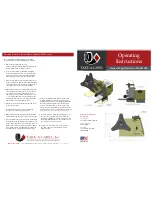
Instruction Manual
7
Correct disposal of the unit
(Electrical and Electronic Equipment)
(Applicable in the European Union and the rest of Europe that have adopted separate collection systems
countries)
The European Directive 2012/19/EU on Waste Electrical and Electronic Equipment (WEEE), requires that
old household electrical appliances must not be disposed of in the normal household waste stream.
Old appliances must be collected separately in order to optimize the recovery and recycling of the
materials they contain and reduce the impact on human health and the environment.
The symbol of the crossed out dustbin is marked on all products to remind the obligations of separate collection.
Consumers should contact their local authority or retailer for information concerning the correct disposal of their product.
•
Non contractual illustration
•
Product information is subject to change without prior notice.
LIVOO
BP 61071
67452 Mundolsheim - FRANCE


























